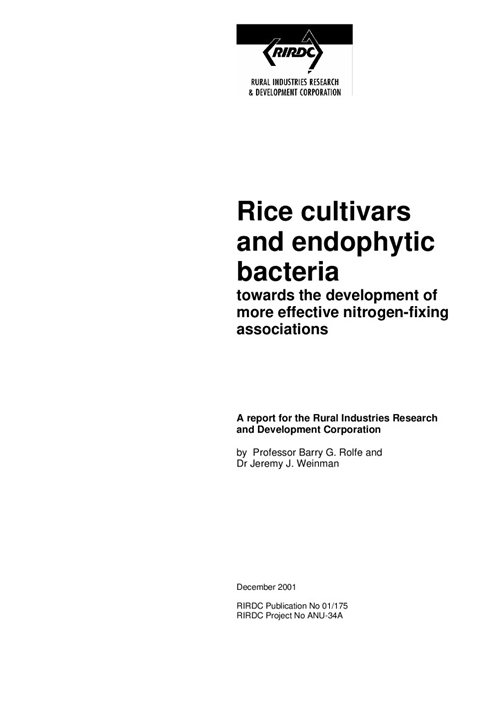Rice Breeding Australia Annual Results: September 2023 to August 2024
As part of this project, Rice Breeding Australia Ltd. (RBA) has rapidly evolved the previous rice breeding program despite significant challenges in its first year...
 RICE
RICE 
24 pages
Published: 1 Dec 2001
Author(s): Rolfe, Barry G., Professor, et al
Download report PDF
DownloadPurchase a hard copy - AUD $45.00
Agriculturalists have searched for various soil bacteria that might make reliable contributions to the growth of non-legume cereals and have found a group of bacteria which intimately associate with rice. Many of these rice-associating strains are also nitrogen-fixing. Recently Rhizobium bacteria, which normally nodulate legumes, have been shown to associate intimately with the roots of rice plants.
The possibility of establishing a more effective type of Rhizobium-non-legume interaction is potentially available in rice because many of the plant compounds that could interact and stimulate rhizobia are also present in rice roots. However, the interaction of introduced bacterial strains with rice cultivars used in Australia had not been examined. This project set out to describe the types of interactions which occur between seedlings of Australian rice cultivars and a range of bacterial and Rhizobium strains. It details the extent and pattern of rice plant colonisation, as well as degree to which the growth of rice seedlings is influenced, and how environmental factors can influence the outcome. Finally, it identifies genetic regions within a model bacterial strain that are essential to the interaction of the bacteria with rice.